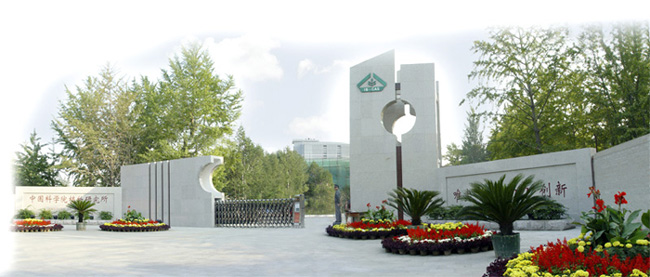
The Institute of Botany, Chinese Academy of Sciences is an integrative research center of basic Plant Sciences in China. Its predecessors were the former Fan Memorial Institute of Botany and the Botanical Institute of Beiping Academy of Sciences sep up in 1928 and 1929 respectively. The two institutions were merged into the Institute of Plant Taxonomy, CAS in 1950. In 1953, the Institute bears its present name.
In 2007, according to the Strategic planning for national mid-long term development, under the guidance of the policy of "cultivating the team, producing elaborate works, broadening sources of income and reducing expenditure, scientific development" and the innovation philosophy of "understanding, supporting, appreciation and harmony," IOB made substantial progress in the construction of innovation ability, innovation system and innovation culture.
Taking "Integrative Plant Biology" as its main research direction, IOB is mainly engaged in the research projects on the fields of the eco-environment, modern agriculture, sustainable utilization of plant resources and systematic evolution that are highly related to the disciplinary development in plant sciences and is focused on the national strategic needs. This mission can be achieved by means of the development of new techniques and modern methodologies. These include, but are not limited to, using various -omics commonly applied in experimental biology and bioinformatics, and via the inter-disciplinary approach to conduct research on different levels of organization in plant systems, from molecular, subcellular, cellular, tissue, organ, individual, population to ecosystem together with other relevant disciplines and techniques. In 2007, IOB has made great achievement in obtaining research grants. As a leading institution, IOB obtained 79 important national scientific and technological grants, including 1 National Key Project and 1 Grand Scientific Research Grant in the " 863 " Program. The total funds of these projects reached 163,280,000 yuan.
IOB contains 7 Research Centers (Garden), including Research Center for Systematic, Research Center for Evolutionary Botany, Research Center for Plant Ecology and Biodiversity Conservation, Research Center for Molecular Developmental Biology, Research Center for Photosynthesis, Research Center for Plant Signal Transduction and Metabolomics, Research & Development Center for Energy Plant and the Beijing Botanical Garden, IOB. The institute also has two State Key Laboratories of Systematic and Evolutionary Botany and Vegetation and Environmental Change (under construction) , and a CAS Key Laboratory of Photosynthesis and Environmental Molecular Physiology. In addition to these on-campus facilities, it also has 9 field stations. As the largest herbarium in Asia, herbarium of IOB has preserved more than 2,450,000 specimens, including 10,000 type specimens, 80,000 seed collections and 70,000 plant fossil samples, and has made significant contributions to important floristic and monographic studies, as well as to the development of modern botany and public education in plant sciences. In 2007, the Herbarium continued carrying on the Virtual Herbarium database construction project, digitalized 5000 type specimens, input information for 305,000 specimens and 275,800 images. The Chinese Virtual Herbarium (CVH) has been established to offer on-line portal allowing access to herbarium specimen information and other botanical knowledge ( http://www.cvh.org.cn/ ).
IOB has a total of 497 staff members. Among them there are 360 scientific researchers and technicians, including 4 CAS members, 64 professors, 80 associate professors and senior technicians. In addition, IOB has 279 doctoral students, 287 master students, 47 postdoctoral fellows and 5 visiting researchers.
In 2002, " Study on the Orchidaceae in China" received a National Natural Science Award (second class). In 2007, IOB published 257 SCI papers, 8 of them were published in top scientific journals such as Plant Cell , PNAS , EMBO J , etc. IOB published 15 monographs, filed 15 patents and licensed 21 patents. There were 3 new grape varieties approved by Beijing New Variety Examine and Approving Committee.
IOB is carrying out 55 cooperative programs with the universities and institutions in over 28 countries. "Flora of China" project have published 14 volumes and 11 books of illustrations. Over 30 scientists of the Institute hold posts in 20 international organizations or editorial board of foreign journals. A Sino-Singapore joint laboratory for research and development of sweet sorghum was established in 2007 for the purpose of exploitation and utilization of energy plants.
IOB sponsors six periodicals, among which Journal of Integrative Plant Biology and Acta Phytotaxonomica Sinica have been indexed by SCI, and Life world has become a popular scientific and cultural magazine.
IOB is one of the institutions that were firstly approved to confer master's and doctor's degrees. At present, it has Ph.D programs in botany, developmental biology and ecology, and master's programs in botany, developmental biology, cellular biology and ecology. The IBCAS is also a national base for postdoctoral trainings.
